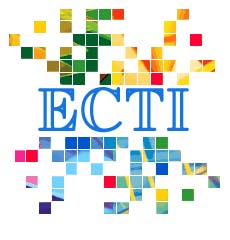Neuro-Fuzzy based Joint Relay-Selection and Resource-Allocation for Cooperative Networks
Main Article Content
Abstract
This paper focuses on a joint relay-selection and resource-allocation algorithm for an Amplify-and-Forward (AF) cooperative network. In a multiuser scenario, joint relay selection and power allocation is a combinational problem for heterogeneous, i.e., real time (RT) and non-real time (NRT), users. In single relay AF (S-AF) scheme, a source-destination pair selects best relay. Thus only two channels are needed (i.e., one for source-destination direct link and other one for the source-relay-destination indirect link) between a source-destination pair. We propose a Neuro Fuzzy (NF) based optimal relay selection algorithm for selecting best relay based on link's signal-to-noise ratio (SNR), link's delay and degree of mobility between a source-destination pair. The available radio resources are then allocated sub-optimally to the RT and NRT users on priority basis. The priority parameter depends on Quality-of-service (QoS) requirement of the RT and NRT users. We deduce a close form expression of the moment-generating-function (MGF) for independent and non identical Rayleigh fading channels. Performance evaluations reveal that the proposed joint scheme has lower complexity and better outage behavior as compared to the conventional schemes.
Article Details
This journal provides immediate open access to its content on the principle that making research freely available to the public supports a greater global exchange of knowledge.
- Creative Commons Copyright License
The journal allows readers to download and share all published articles as long as they properly cite such articles; however, they cannot change them or use them commercially. This is classified as CC BY-NC-ND for the creative commons license.
- Retention of Copyright and Publishing Rights
The journal allows the authors of the published articles to hold copyrights and publishing rights without restrictions.
References
[2] Y. Zhao, R. Adve and T. J. Lim, "Improving Amplify-and-Forward Relay Networks: Optimal Power Allocation versus Selection ," Proceeding of ISIT 2006, USA, July 9-14 2006.
[3] A. Bletsas, A. Lippman and D. Reed, "A Simple Distributed Method for Relay Selection in Cooperative Diversity Wireless Network Based on Reciprocity and Channel Measurements," IEEE VTC 2005, May 2005.
[4] Y. Yao, X. Chi and G. B. Giannakis, "On Energy E±ciency and Optimal Resource Allocation of Relay Transmission," IEEE Trans. on Information Theory, vol. 4, pp. 2917-2927, November 2005.
[5] D. B. Cheikh, and A. Saadani, "On the Outage Probability in Amplify-and-Forward Relay Channels," IEEE WCNC 2009, Hungary, April 2009.
[6] L. Zinan, and E. Erkip, "Relay Search Algorithms For Coded Cooperative Systems," Global Telecommunications Conference, 2005. GLOBECOM '05. IEEE, vol. 3, 28 Nov.-2 Dec. 2005 pp.6-10.
[7] M. Kaiser and K. M. Ahmed, "Resource Allocation for Heterogeneous Services in Relay Enhanced OFDMA System," Journal of Communications, Vol 5 (4), 2010.
[8] X. Zhang, S. Chen and W. Wang, "Multiuser Radio Resource Allocation for Multiservice Transmission in OFDMA Based Cooperative Relay Networks ," EURASIP Journal on Wireless Communications and Networking, 2009.
[9] T. M. Hagan et. al.,"Neural Network Design",PWS publishing company,1996, pp- 215-496.
[10] S. Cheikh, G. Lassous, and Isabelle, "Estimating Average End-to-End Delays in IEEE 802.11 Multihop Wireless Networks," INRIA a CCSD electronic archive server based on P.A.O.L (France), HAL CCSD Publisher, 2007.
[11] M. Kaiser, I. Khan and K. M. Ahmed, NF Selection Algorithm for Optimal Relaying in OFDM Systems, IEICE, 2010.
[12] J. Abate, "Numerical Inversion of Laplace Transforms of Probability Distributions", ORSA J. Computing, vol.7, no.1, pp.36-43, 1995.
[13] D. S. Michalopoulos, G. K. Karagiannidis, T. A. Tsiftsis, and R. L. Mallik, "An Optimized User Selection Method For Cooperative Diversity Systems," IEEE Globecom 2006, vol. 5, pp. 2854-2859, December 2006.
[14] A. Bletsas, H. Shin, and M. Z. Win, "Cooperative Communications With Outage-Optimal Opportunistic Relaying," IEEE Transactions on Wireless Communications, Vol. 6, Issue 9, pp. 3450 3460, September 2007.
[15] K. J. R. Liu, A. K. Sadek, W. Su and A. Kwasinski, Cooperative communications and networking, Cambridge University Press, UK, 2009.
[16] A. Adinoyi, Y. Fan, H. V. Poor and F. A. Shaalan, Performance of Selection Relaying and Cooperative Diversity, vol. 8, no. 12, pp. 5790-5795, December 2009.
[17] I.S. Gradshteyn and I.M. Ryzhik, Table of Integrals, Series, and Products, 7th ed. London, Academic Press, Inc, 2007.
[18] L.L. Yang and H.H. Chen, "Error probability of digital communications using relay diversity over nakagamifim fading channels," IEEE Trans. Wireless Commun., vol. 7, no. 5, pp. 1806-1811, May 2008.
[19] S. Ikki, and M. H. Ahmed "Performance analysis of cooperative diversity wireless networks over Nakagami-m fading channel," IEEE communication letters, vol. 11, no. 4, pp. 334-336, Aprl. 2007.
[20] Y.C. Ko, M.S. Alouini and M.K. Simon, "Outage Probability of Diversity Systems over Generalized Fading Channels," IEEE Trans. Commun., vol. 48, no. 11, pp. 1783-1787, Nov. 2000.
[21] H. Jeong, and J. H. Lee, "Adaptive Relay Selection for Regenerative OFDMA Relay Networks with Fairness Constraints," VTC Fall 2008, pp.1-5.


